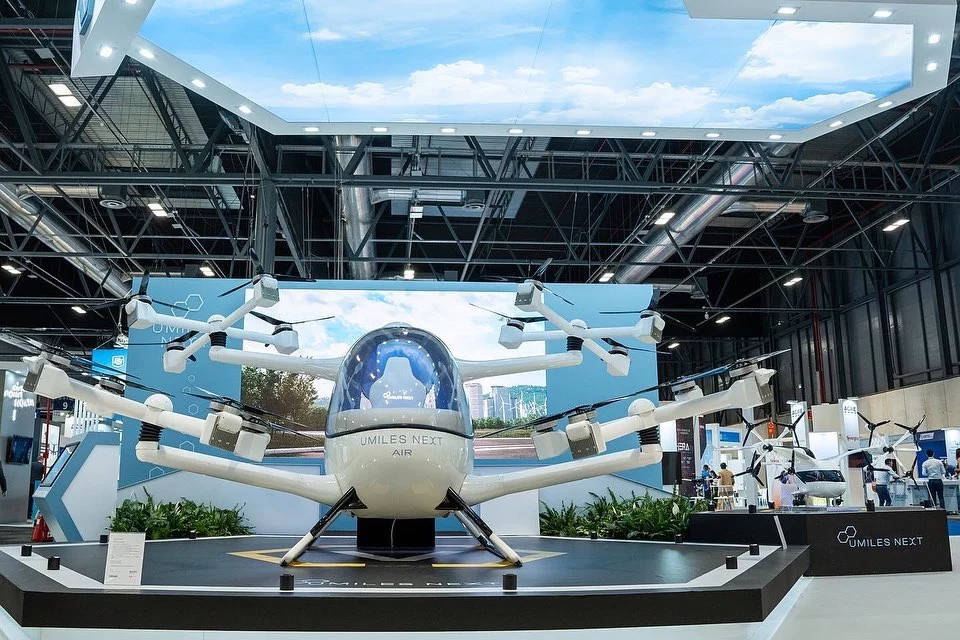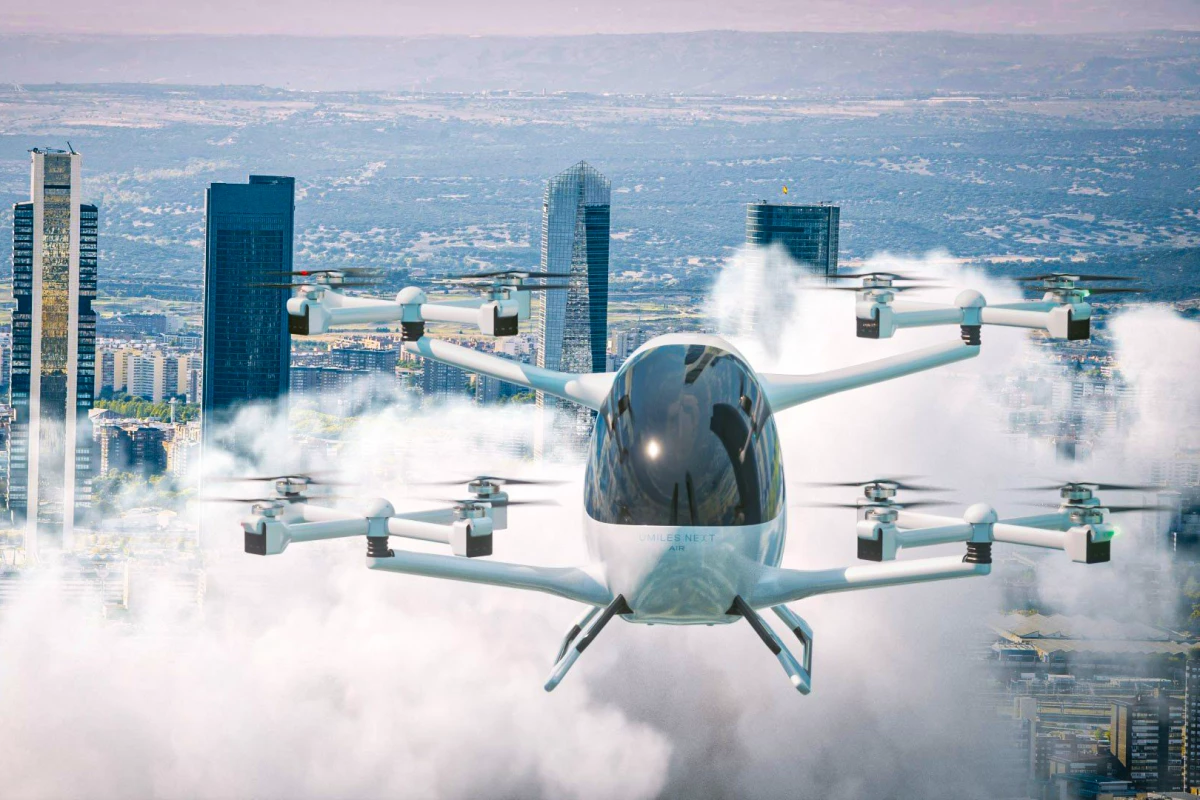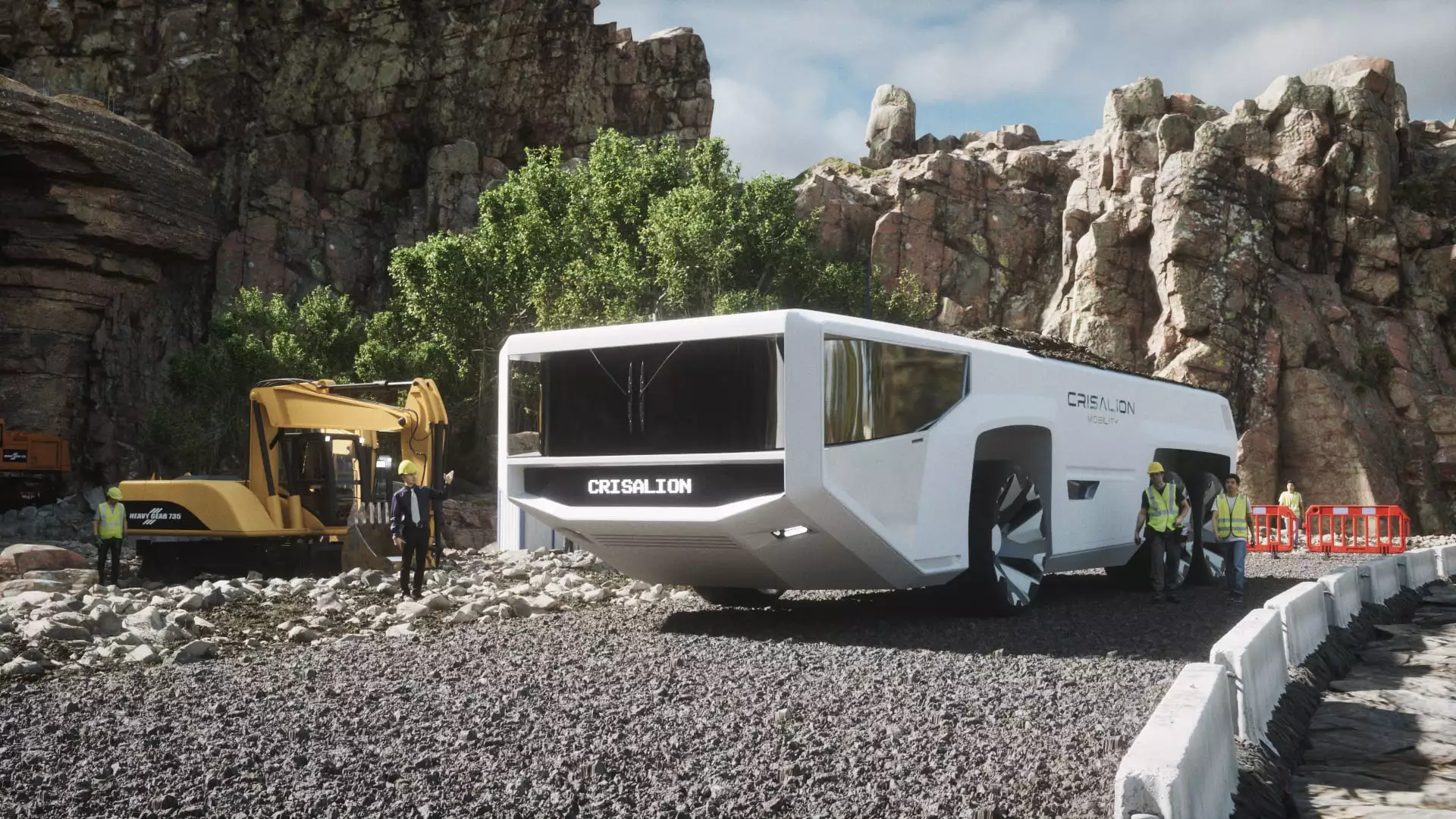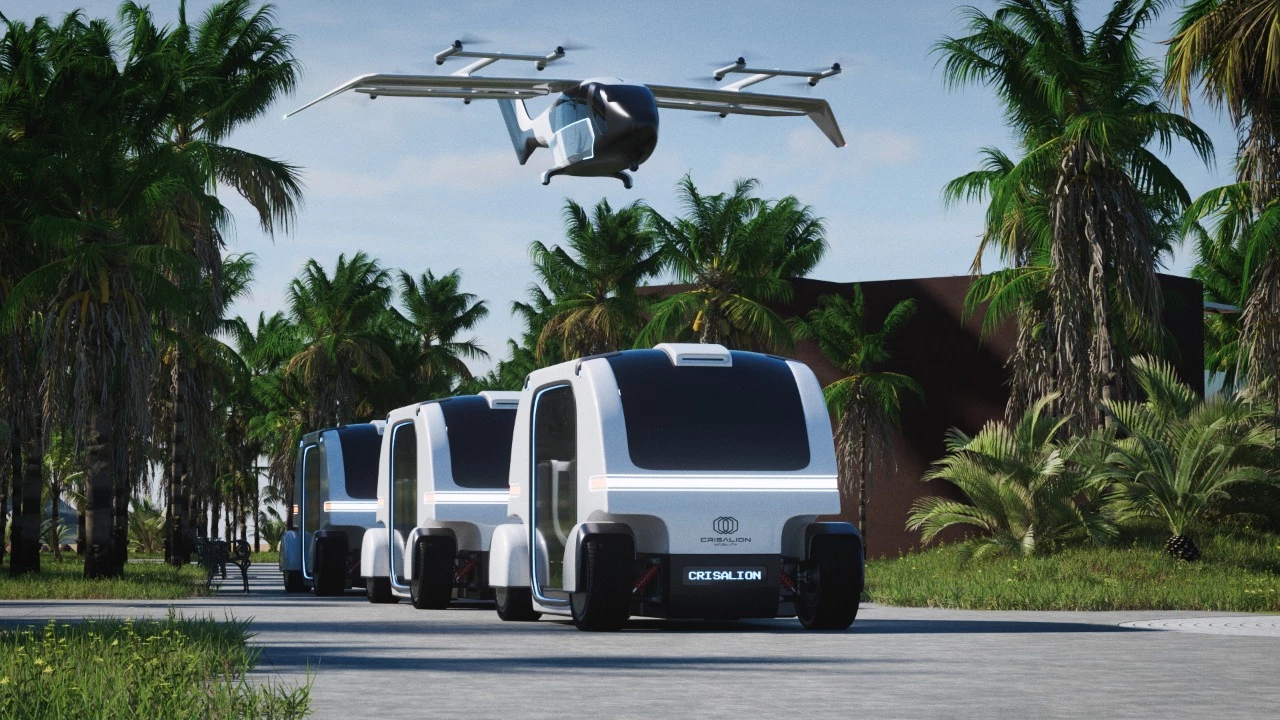How did we miss this one? This Spanish eVTOL has been flying in prototype form for a number of years now, using a unique 4x4-prop FlyFree tilting mechanism designed to keep the cabin level – and a new five-seat design takes things up a level.
Madrid-based Crisalion Mobility (formerly UMiles Next) has an integrated vision for the future of transport, with a range of autonomous and remote-controlled ground vehicles working in fleet-managed concert with electric VTOL aircraft to streamline cargo and passenger operations.
As such, the company has designed a range of little autonomous, chain-capable mobility pods, golf carts, baggage carts, personal minicars and even the super-slick rock-carrying future dump truck below, which wouldn't look out of place on the Moon.

But it's the aircraft that caught my eye. Just when I thought the eVTOL world had fully transitioned from the wild 'n' woolly creative chaos of its early days into a rather sensible and boring phase of regulatory certification, it seems there are still surprises to be found.
Crisalion's FlyFree airframe design can more or less be described as a regular quadcopter layout, but at the end of each arm, where you'd normally find a propeller, you instead find... well, more or less another quadcopter frame with four small props of its own, in an arrangement that's designed to tilt relative to the rest of the aircraft.
Take a look:
Why? Well, Crisalion doesn't believe people are going to love the experience of flying in manned multicopter-type designs like the eHang 216-S, because they need to tilt to move, or even to balance themselves against wind gusts. The FlyFree system is an effort to keep the cabin more stable, and simply tilt the propulsion banks as required.
Considering the way these prop banks flop to the side when the thrust is switched off, it appears to be a passive system – more or less a free-tilting ball and socket arrangement that lets the mass of the fuselage act as its own stabilizing weight. And in at least two rounds of human-scale prototype testing, it seems like it does what it says on the tin.
Of course, there are downsides. One that springs to mind is that it adds a unique single point of failure at the end of each main arm; if that ball and socket gives up the ghost, you lose a quarter of your propulsion all at once, in dramatic fashion, and that's pretty much your redundancy gone.

Another issue is that this approach gives you 16 small-diameter props to fly on – a hideously inefficient, high-disc load arrangement that'll require significantly more power to stay aloft than four larger props would. That inefficiency is compounded by the fact that these single-seat prototypes have no wings for efficient cruise flight. That's gonna kill your effective range.
The company seems to see the issue; renders of its full-size, five-seat Integrity air taxi design appear to show a different system altogether – this time, with broad wings and a T-tail. The 4x4 propeller layout remains, but it seems the FlyFree system has changed substantially. Check it out:
So the small prop issues remain – albeit ameliorated somewhat by the ability to cruise on wing lift. And the single point of failure appears to be replaced by two different points of failure, where the propulsion banks are able to tilt along the X and Y axes on separate mechanisms. These tilt mechanisms are now active, too, so the flight control software will need to constantly adjust their angle in response to flight conditions and pilot inputs.
It looks a little complicated and inefficient – but on the other hand, it also looks like it'll be capable of keeping the cabin level and comfy in a way that most other designs can't, while still being capable of full VTOL, hover and cruise flight phases. So there are definitely some unique benefits.
Either way, despite some fairly extensive work on those early aircraft prototypes, it seems Crisalion is focusing on Earthly designs first, attempting to get its roadgoing vehicles up and running sometime this year with a US$27 million Series B investment round coming soon, according to Electric VTOL News. The Integrity eVTOL aircraft apparently isn't scheduled until 2030.
Lord knows what the world will be like in 2030; I wouldn't dare to speculate at this point. The Integrity might as well be coming in 2050. But still, we do enjoy chewing over the merits of different approaches, and the FlyFree system certainly ticks that box for me.
Source: Crisalion










